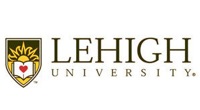Below is a summary of the abstract you submitted. Presenting author(s) is shown in bold.
If any changes need to be made, you can modify the abstract or change the authors.
You can also download a .docx version of this abstract.
If there are any problems, please email Dan at dar78@pitt.edu and he'll take care of them!
This abstract was last modified on March 16, 2021 at 10:37 a.m..

The major research goal of the SEA-PHAGES project at Lehigh University is to isolate and characterize novel Actinobacteriophages, using bacterial hosts from the order Actinomycetales, thereby contributing to an understanding of phage genomic structural and functional diversity, with a ultimate goal of contributing to the potential development and expansion of molecular tools to manipulate these phages and their hosts. Since 2009 Lehigh students have isolated, purified, and characterized 189 mycobacteriophages, using the host Mycobacterium smegmatis, including over 3 dozen phages whose genomes have been sequenced and annotated. Of special interest to our group are Cluster N mycobacteriophages because of the ability of Cluster N prophages to shield the host from attack by several heterotypic phages. To date, we have isolated 10 Cluster N phages by serendipidy and by analyzing reduced plating efficiencies of newly isolated phages on the Cluster N Xeno lysogen to identify putative Cluster N candidates or heterotypic phages that are subject to Xeno prophage-mediated defense. Here we report updates from our 2020 cohort of Phage Hunters and Annotators.
I. Of the 16 new phages identified that infect Mycobacterium smegmatis, two were sequenced and annotated as members of Cluster A (Gyzlar (A1) and Roksolana (A6). Comparative genome analysis and functional annotation of Gyzlar and Roksolana revealed the presence of different genetic mechanisms to promote lysogeny: the Gyzlar genome encodes a serine integrase and immunity repressor; Roksolana encodes ParA- and ParB-like chromosomal partitioning proteins along with an immunity repressor. Additional features of these genomes will be presented. II. Infectivity of all newly isolated M. smegmatis phages was tested on Cluster N Xeno lysogen lawns to determine if any Cluster N phage candidates were present or to identity heterotypic phages that may be subject to prophage-mediated defense. No new Cluster N phages or heterotypic phages subjected to Xeno prophage-mediated defense were identified. III. Phages hypothesized to be temperate based on plaque characteristics were identified and putative lysogens were isolated from those phages using halo assays, supernatant release assays, and efficiency of lysogeny measurements. Immunity relationships were investigated to uncover putative cluster relationships between phages and prospects for identifying phages subjected to prophage-mediated defenses. Interestingly, Rocksolana, but not Gyzlar, was able to form a stable lysogen. Additional bioinformatics analyses revealed a truncated Gyzlar integrase (gp35) and the absence of 3-4 genes upstream compared to several other A1 genomes. Further comparative bioinformatics analyses of this genomic region of Gyzlar is ongoing. Overall, characterization of these new genomes further contributes to our understanding of phage genome architecture and diversity.


